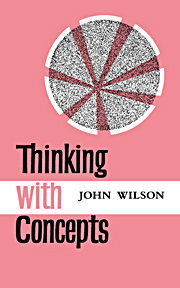Summary
CRITICISM OF PASSAGES
One of the best ways of getting practice in the analysis of concepts is to see how concepts are used or abused by other people: and in this chapter we shall give some passages which need the special kind of conceptual criticism that we have been investigating. Here again it is worth repeating that this criticism is not a matter of formal logic, nor a matter of ‘straight thinking’ merely. It is only rarely that we can, on the one hand, convict the authors unhesitatingly of a classic fallacy of the sort found in textbooks on logic: but on the other hand it is inadequate to say that the passages are just ‘confused’, or ‘obscure’, or that the author ‘hasn't defined his terms’, or ‘is prejudiced’. What happens in these passages is that concepts are mishandled: or to speak more precisely, handled without full awareness and clarity.
Hence it is conceptual criticism that is needed: and the methods of analysis discussed in chapter 1 should prove equally helpful here. Instead of merely letting ourselves be carried along by what the author writes, or alternatively of rejecting the whole passage out of hand, we must try and penetrate beneath the words to the way in which the concepts are handled. We must have sufficient sympathy with the author to realise just what is happening to the concepts: it is rarely that authors talk sheer nonsense, and there is usually some plausibility in what they say.
Information
- Type
- Chapter
- Information
- Thinking with Concepts , pp. 60 - 125Publisher: Cambridge University PressPrint publication year: 1970
